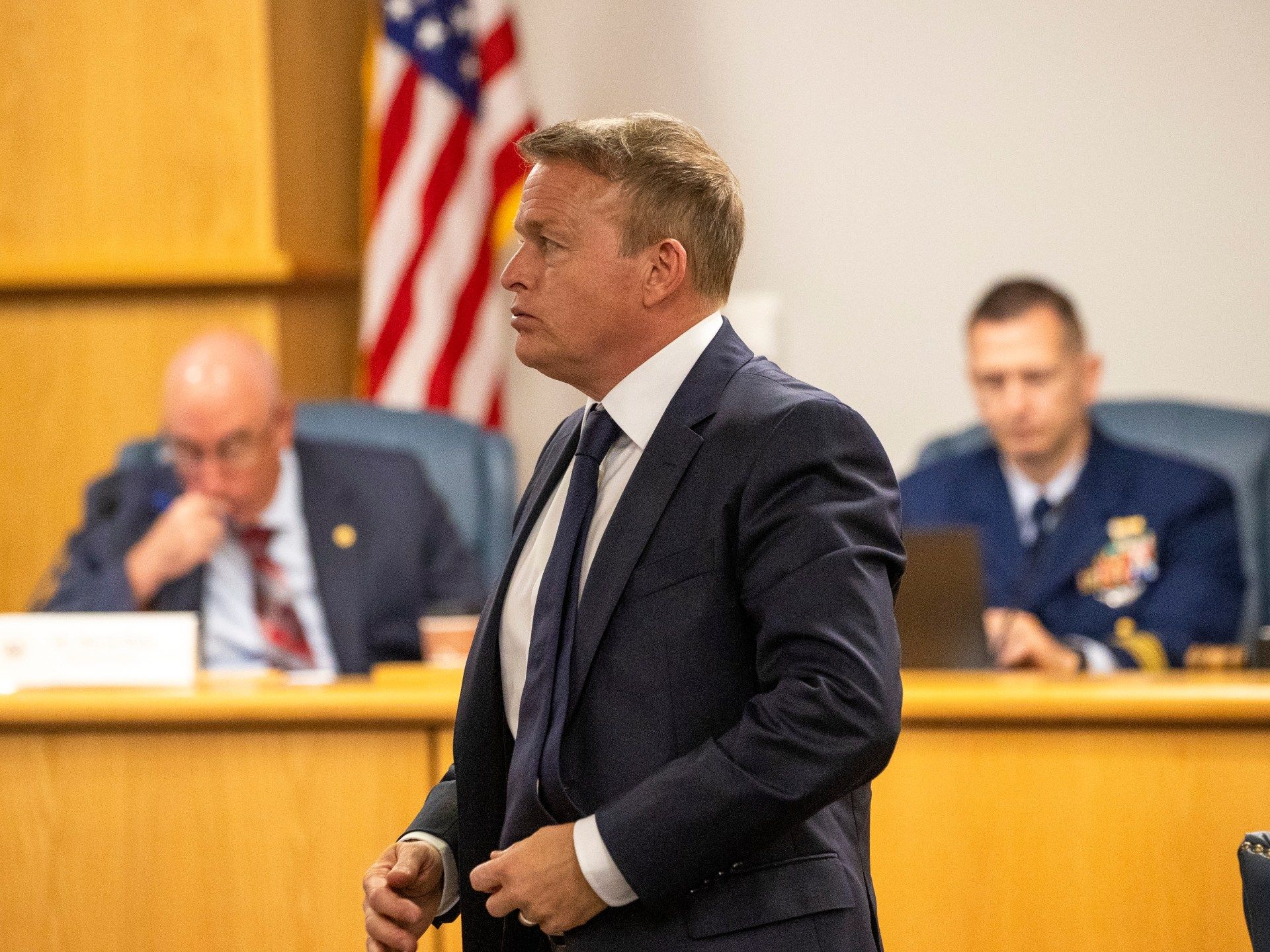A key employee who called the Titan experimental submersible unsafe before its final, fatal voyage said the tragedy could have been avoided if a U.S. federal safety agency had investigated his complaint.
David Lochridge, OceanGate's former chief operating officer, said he was disappointed by the Occupational Safety and Health Administration's decision not to follow up on his complaint.
“I believe that if OSHA had attempted to investigate the severity of the concerns I raised on multiple occasions, this tragedy could have been avoided,” he said Tuesday while speaking before a committee trying to determine what caused the Titan to implode as it headed toward the wreck of the Titanic last year, killing all five people on board.
“As a seafarer, I am deeply disappointed by the system that aims to protect not only seafarers but also the general public,” he added.
Lochridge said during his testimony that eight months after he filed the complaint with OSHA, a caseworker told him the agency had not launched an investigation and that there were 11 pending cases against him. By then, OceanGate had sued Lochridge and he had filed a countersuit.
About 10 months after filing the complaint, he decided to withdraw. The case was closed and both lawsuits were dismissed.
“I didn’t give them anything, they didn’t give me anything,” he said of OceanGate.
OSHA officials did not immediately respond to a request for comment Tuesday.
Earlier in the day, Lochridge said he frequently clashed with the company's co-founder and felt the company was solely committed to making money.
Lochridge was one of the commission's most eagerly awaited witnesses. His testimony was consistent with that of other former employees who spoke on Monday, one of whom described OceanGate chief Stockton Rush as volatile and difficult to work with.
“The idea behind the company was to make money,” Lochridge said. “There was very little in the way of science.”
OceanGate faced pressure to launch Titan quickly
Rush was among five people killed in the implosion. OceanGate owned the Titan and had used it on several dives to the Titanic since 2021.
The commission has heard testimony painting a picture of a troubled company that was eager to launch its unconventionally designed vessel. The accident has sparked a global debate about the future of private underwater exploration.
Lochridge joined OceanGate in the mid-2010s as a veteran engineer and submersible pilot and said he quickly felt like he was being used to lend scientific credibility to the company. He said he felt the company was selling him as part of the project “so people would come and pay money,” and that didn’t sit well with him.
“I felt like a show pony,” she said. “The company made me stand there and give talks. It was hard. I had to go up and do presentations. All that.”
Lochridge referred to a 2018 report in which he raised safety concerns about OceanGate's operations. He said that with all the safety issues he saw, “there was no way I would approve this.”
Asked if he had confidence in the way the Titan was being built, he said: “No confidence at all.”
Washington state-based OceanGate suspended operations after the implosion.

Former employee calls Titan “unsafe”
Former OceanGate engineering director Tony Nissen opened Monday's testimony by telling investigators that he felt pressured to prepare the ship for diving and had refused to pilot it during a voyage several years before Titanic's final voyage. Nissen worked on a prototype hull that predated Titanic's expeditions.
“I'm not going to get involved in this,” Nissen said he told Rush.
Former OceanGate finance and human resources director Bonnie Carl testified that Lochridge had characterized the Titan as “unsafe.”
During the submersible's final dive on June 18, 2023, the crew lost contact after an exchange of text messages about the depth and weight of the Titan as it descended. The support ship, Polar Prince, then sent repeated messages asking if the Titan could still see the ship on its onboard display.
One of the Titan crew's last messages to the Polar Prince before the submersible imploded read “all good here,” according to a visual recreation presented earlier in the hearing.
When the submersible failed to return, rescuers sent ships, planes and other equipment to an area about 700 kilometres south of St. John's, Newfoundland. Wreckage from the Titan was later found on the ocean floor about 300 metres from the Titanic's bow, Coast Guard officials said.












